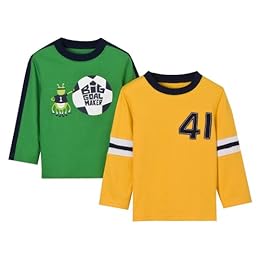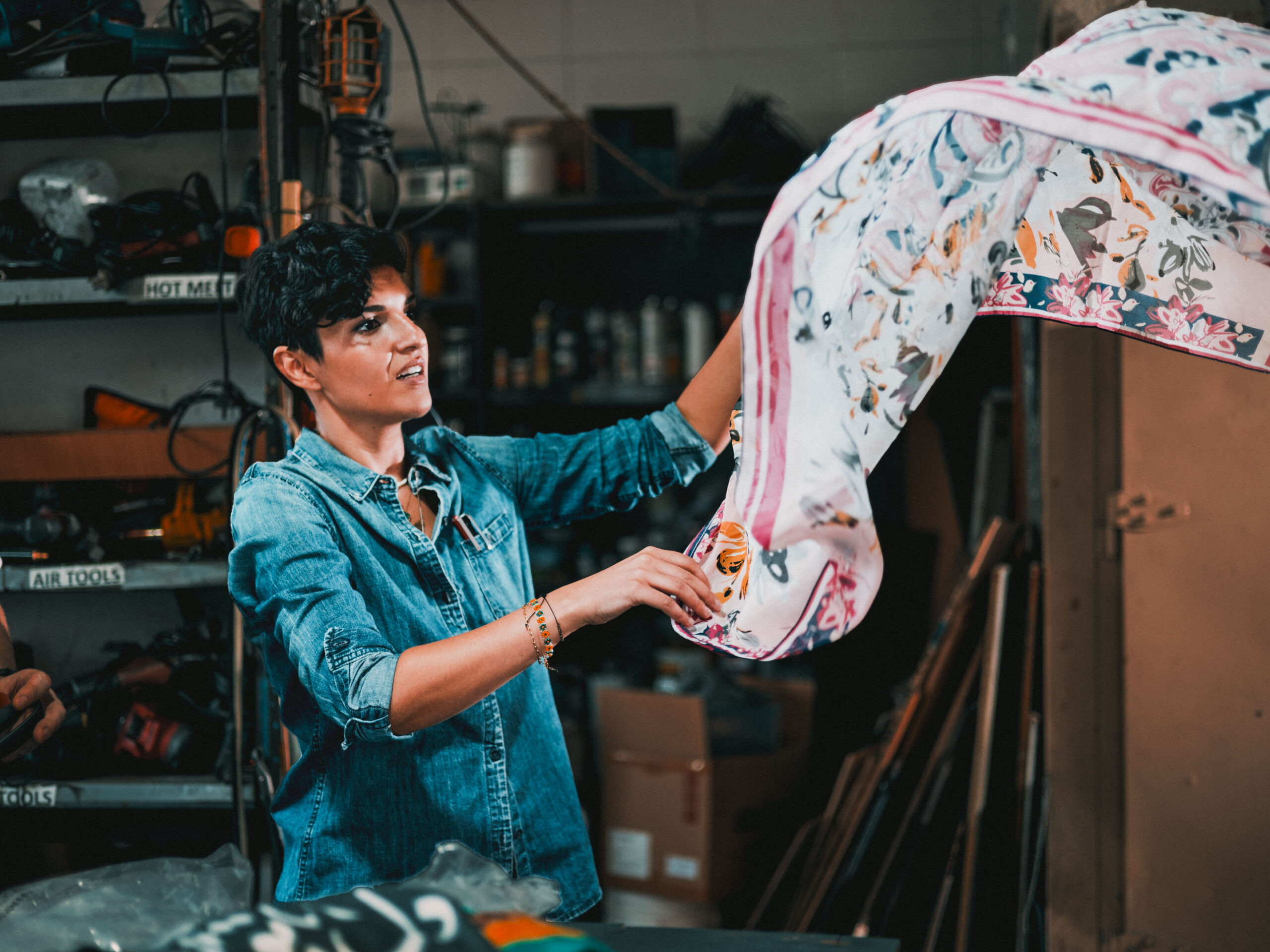
February 8, 2010
The Extinction of the Unisex


When I was a girl, I put away girly things. From the age of five or so, I would not wear a dress, embraced flannel shirts and overalls, knickers and vests and bowties, and shopped in the Sears boys department. I fondly remember a pair of teal corduroy knickers my mother made me, as well as a gray canvas jacket lined in plaid. Both would probably be very fashionable on the Lower East Side today. Up until the age of five, my mother had made many of my clothes, or bought them at the Carters outlet, and they were green and blue and red, Marimekko and striped. My brother wore them all when he came along 3.75 years later, because they were unisex. At five I moved into the girls department, and found it to be alien.
Now I have a toddler of my own, and we often dress alike. But he’s a boy. Striped long sleeve t-shirts and jeans, hoodies and cargo pants, down vests and sneakers in orange and blue, green and gray. We are casual. I work from home. There’s plenty of overlap between my wardrobe and the miniature version in the boys departments of the inexpensive places I shop, Target and Old Navy, Daffys and Tea Collection on sale. I have to choose carefully to avoid camouflage and truck appliques, sports teams and rock n’ roll t-shirts. I don’t like to project my interests onto my boy, and they include none of the above. He doesn’t have interests yet.
When I wander into the girls department, it is still alien. There isn’t one thing I would wear. Setting aside the question of pink (which, much like the question of Barbie, is an argument for another day), there’s little that isn’t a pastel or a bright, a version of red or blue or green that definitely isn’t for boys. If there is a navy blue dress, it comes with lavender polka dots or pink leggings. And polka dots are restrained. There is hardly anything plain: the leggings have flowers, the t-shirts have butterflies, the hoodies have sparkles. One day I saw a rack of orange and turquoise t-shirts—the boys colors, as if to compensate from the fluorescent explosion next door, tend to the muddy, navy and army green and maroon—and rushed over. They were 100 percent cotton, they had no hearts, but each tiny sleeve had been shirred. Even if I had decided my boy could wear tangerine, I knew he couldn’t wear puffed sleeves.
It must be the explosion of cheap clothes that has produced so much differentiation, so much trimming, so many colors. In Target with too many choices, I am always wishing they were fewer, and plainer. Why can’t my boy wear a teal sweatshirt, and my niece black jeans? Why can’t that red raincoat leave off the pink hood lining, the red sweatshirt come without a giant 32? I sometimes see such things in the designer labels, but I am not going to pay more for the item with less on it. (For some reason, the Appaman black down coat was popular for girls in my neighborhood, in a a way I suspect an Old Navy one never would be.) For the bargain children’s shopper, the unisex will soon be extinct.
Observed
View all
Observed
By Alexandra Lange
Related Posts

Arts + Culture
Nila Rezaei|Essays
“Dear mother, I made us a seat”: a Mother’s Day tribute to the women of Iran

The Observatory
Ellen McGirt|Books
Parable of the Redesigner

Arts + Culture
Jessica Helfand|Essays
Véronique Vienne : A Remembrance

Design As
Lee Moreau|Audio
Announcing: Design As Season Two
Recent Posts
“Dear mother, I made us a seat”: a Mother’s Day tribute to the women of Iran A quieter place: Sound designer Eddie Gandelman on composing a future that allows us to hear ourselves think It’s Not Easy Bein’ Green: ‘Wicked’ spells for struggle and solidarity Making Space: Jon M. Chu on Designing Your Own PathRelated Posts

Arts + Culture
Nila Rezaei|Essays
“Dear mother, I made us a seat”: a Mother’s Day tribute to the women of Iran

The Observatory
Ellen McGirt|Books
Parable of the Redesigner

Arts + Culture
Jessica Helfand|Essays
Véronique Vienne : A Remembrance

Design As
Lee Moreau|Audio

 Alexandra Lange is an architecture critic and author, and the 2025 Pulitzer Prize winner for Criticism, awarded for her work as a contributing writer for Bloomberg CityLab. She is currently the architecture critic for Curbed and has written extensively for Design Observer, Architect, New York Magazine, and The New York Times. Lange holds a PhD in 20th-century architecture history from New York University. Her writing often explores the intersection of architecture, urban planning, and design, with a focus on how the built environment shapes everyday life. She is also a recipient of the Steven Heller Prize for Cultural Commentary from AIGA, an honor she shares with Design Observer’s Editor-in-Chief,
Alexandra Lange is an architecture critic and author, and the 2025 Pulitzer Prize winner for Criticism, awarded for her work as a contributing writer for Bloomberg CityLab. She is currently the architecture critic for Curbed and has written extensively for Design Observer, Architect, New York Magazine, and The New York Times. Lange holds a PhD in 20th-century architecture history from New York University. Her writing often explores the intersection of architecture, urban planning, and design, with a focus on how the built environment shapes everyday life. She is also a recipient of the Steven Heller Prize for Cultural Commentary from AIGA, an honor she shares with Design Observer’s Editor-in-Chief,